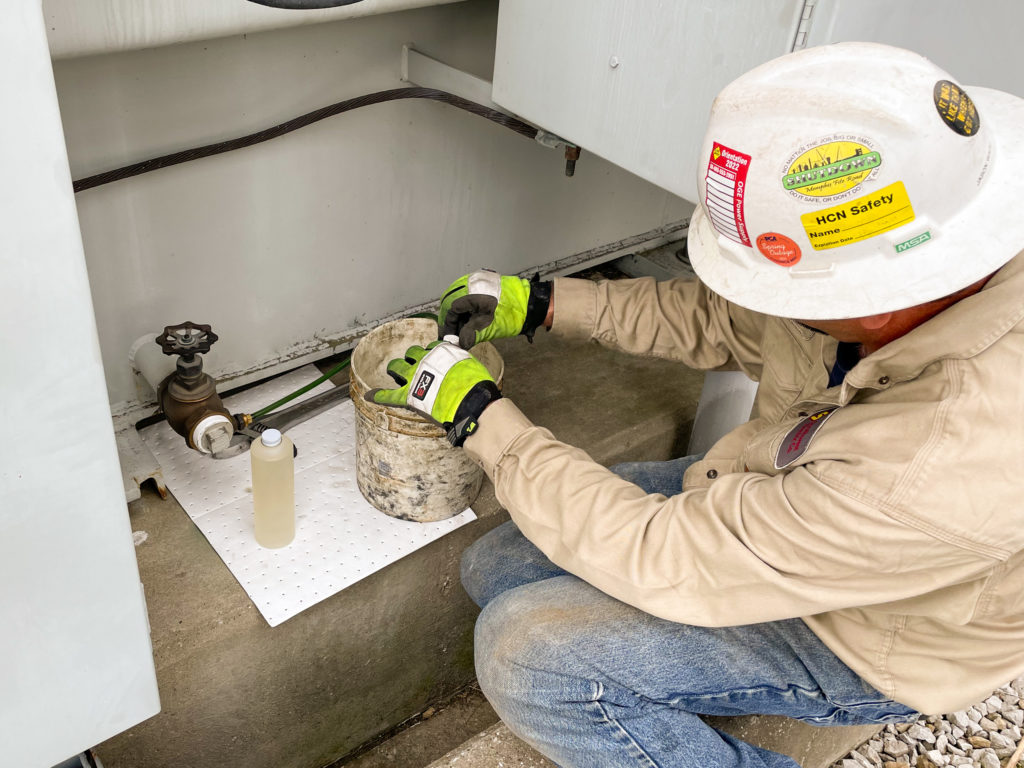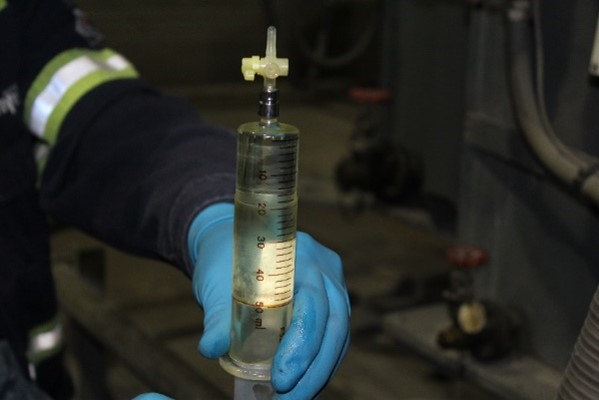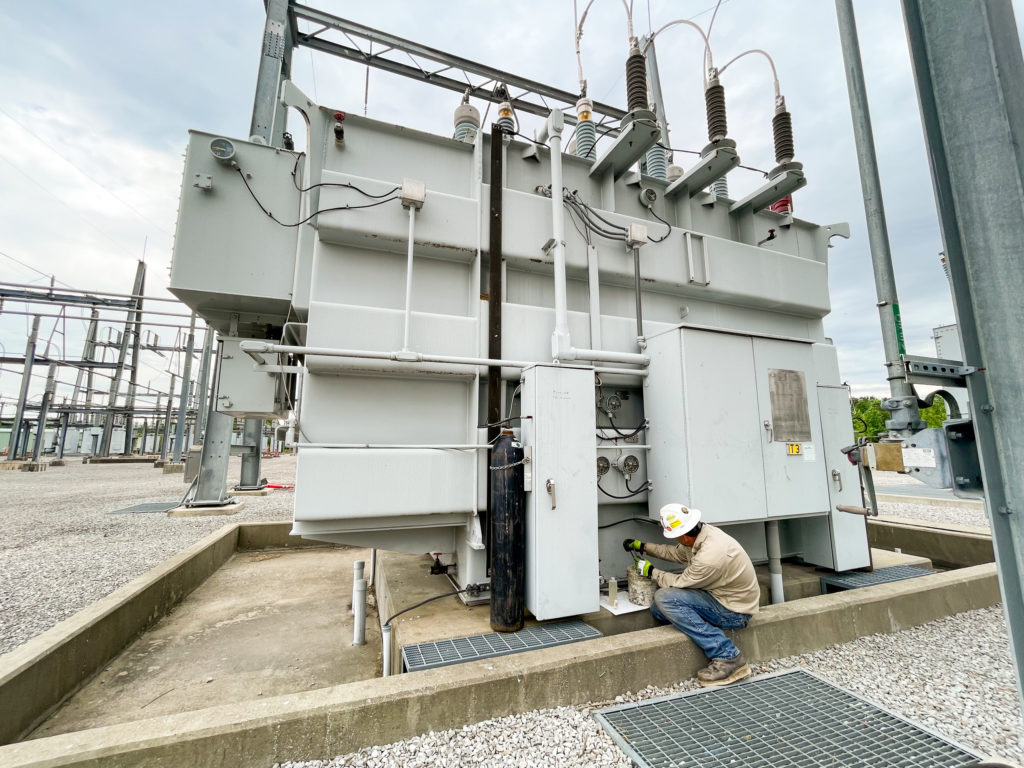By Mark Stone, Training Manager
Transformer sampling is one of the cheapest and easiest ways to determine what is going on in our transformers, but it is important to sample correctly to make sure you get a good representative sample from the transformer. Don’t wait until the transformer fails to do this sampling – many of the high costs that come with a failure can be avoided or lessened if you are proactive. At Southwest Electric, we recommend annual testing and transformer sampling to see how they are operating and potentially avoid these extra costs. If oil sampling is done correctly, we can look at the dielectric fluid to diagnose problems similar to the way a doctor looks at a human blood sample to identify potential illness. If you do not get that good representative sample, you are wasting your time and money, because the lab is going to give you inaccurate test results and recommendations.
Should I Sample all of my Transformers?
When deciding which transformers to sample and when, you’ll find it might be more important to keep certain transformers in your facility on frequent sampling program, while others can go a but longer between tests. A good way to determine which transformers need frequent testing is to run a criticality analysis on each unit. This analysis will help you chart out what will happen to your facility if we were to lose each transformer. Will the damage be minimal, or will my whole plant be down for a month? The criticality analysis will help you look downstream from the transformer to measure impact as well. The more important transformers should have more testing in order to prevent catastrophic failure.
How do I Pull a Sample on an Energized Transformer?
Carefully, of course. ASTM D 923 (Standard Practices for Sampling Electrical Insulating Liquids) tells us how to pull samples. But, before sampling, it’s important to get the nameplate information, gauge readings, and do a visual inspection to check for leaks. All of this info is needed because it helps determine the lab recommendations for the test results. To help with getting that information, Southwest Electric has developed a downloadable inspection form to make sure we get all the proper information.
How Much Oil Should I Pull?
ASTM D- 923 states that whenever you sample a transformer you should flush 2 liters of oil. This can be a lot of oil from a smaller gallon transformer, and if you have a valve extension on it, this might not even be enough. So, one way to tell how much oil we should flush is by looking at the size of the front plug on the bottom valve. If the front plug is a 1” plug, you should flush approximately 48 ounces. For a 2” plug, flush 60 ounces before you start sampling. If the transformer has an extended valve system, you will need to flush more. Because the oil in the valve stem or the extended valve hose is stagnant, it doesn’t thermal syphon in the transformer, so it doesn’t pick up any gasses or contaminants that are forming in the transformer.

What Type of Container Should I Use?
When it comes to sampling containers, different labs use different types of bottles. So, the best way to get the correct bottles is to just get ahold of your lab of choice and they should send you the bottles that they use for the different oil tests. If you are having a company like Southwest Electric Co come in and pull the samples for you, they will come equipped with everything they need to do the job safely and professionally.
How to Sample a Transformer:
If you are going to sample your own transformers here are the steps that should be followed:
- Complete a Visual Inspection
- Note all the nameplate information
- Record the gauge readings (Verify the pressure/vacuum gauge. If you have a vacuum, you will need to relieve it with dry nitrogen.)
- Inspect for leaks
- Preparing the Valve
- Lay rags below the valve
- Put a drip pan under the valve
- Verify the valve is closed
- Remove front plug (If possible, avoid using the side sample port.)
- Wipe out internal part of valve
- Put in appropriate size reducer
- Tip drip pan up in front of reducer and slowly open valve
- Sit drip pan on rag
- Take the Sample(s)
-
- Take a bottle and fill it halfway, put lid on, swirl oil around and dump that oil out, then proceed to filling bottle for sample (Don’t let dirt or anything get in the sample bottle and don’t touch the inside part of the cap.)
- Wipe any oil off bottle and set it aside
- Continue with other containers
- Label each sample container so you know what bottles came from which transformer
- Filling a Syringe for a Dissolved Gas Analysis (DGA)
- Each box will have a syringe and a piece of tubing
- Eject air out of syringe and connect tubing to syringe petcock
- Put other end of tubing on transformer valve reducer
- Make sure syringe petcock arm is in position 1 back toward the syringe
- Make sure position 2 is pointing toward drip pan
- Open transformer valve (oil will flow from transformer into petcock and then down into the drip pan)
- Turn petcock arm to position 2 (syringe will start to fill with oil)
- Take oil to 50 mils
- Turn petcock arm to position 3 and eject oil from syringe
- After oil is ejected, turn petcock arm to position 2 and fill syringe to 50 mils
- Turn petcock arm to position 1
- Turn transformer valve off
- Point petcock up and put side pressure on plunger
- Work are bubbles into petcock
- Keeping side pressure on plunger turn petcock arm to 2
- Slowly expel bubbles and oil to the 40 or 42 mil mark on syringe
- Turn petcock arm to position 1 valve is shut off, put it back in box

After filling all the containers needed for the test that you are running, make sure the valve is shut off, remove tubing from reducer, and then remove reducer. Take the front plug from the valve and wrap it with Teflon tape. Tighten plug and dump oil from drip pan and clean everything up.
Congratulations, you have just pulled a good representative sample from your transformer and should get good recommendations back from your lab!
Need the pros to help you with transformer sampling? We offer sampling services along with a complete range of testing and maintenance field services for a variety of industries. Give us a call or email us to get the conversation started!
For more information about How Often to Sample Your Transformers, watch our video below!

Stay connected: Follow Southwest Electric on LinkedIn, Facebook, and YouTube.
,

